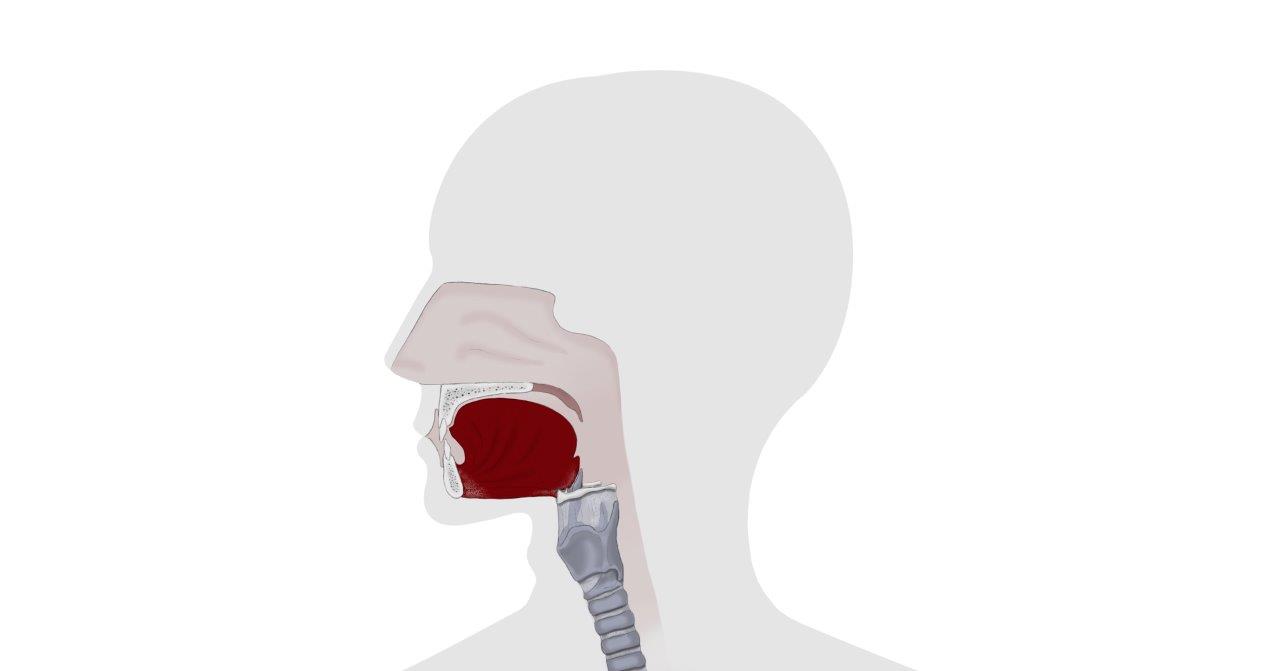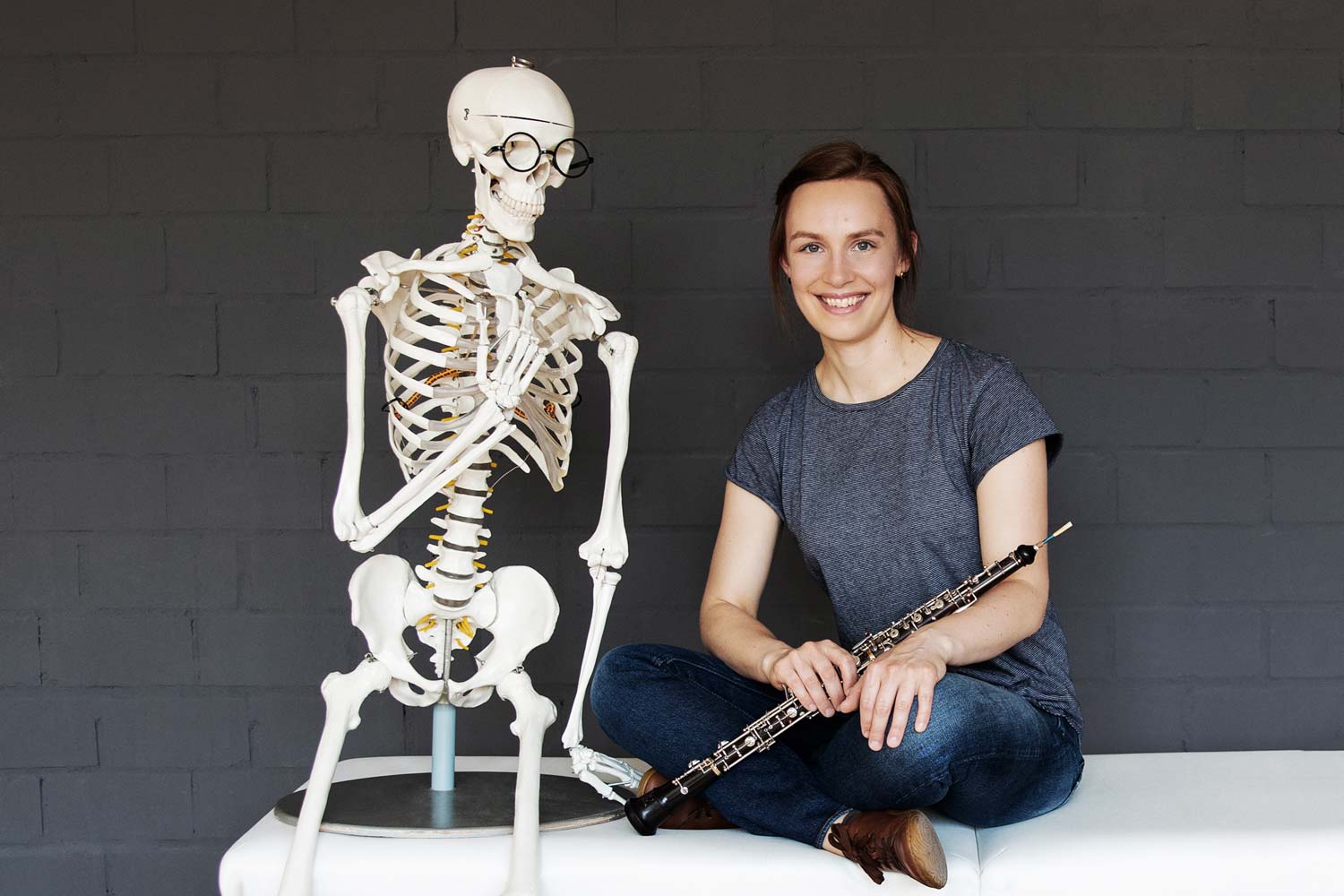by Sophie Stahl (31.01.2023)
Showing one's tongue in public is often associated with disgust, displeasure or insult. For musicians, however, sticking out the tongue in a controlled manner can improve articulation, coordination and regeneration ability and have a positive effect on free breathing.
Here is my tip: If you want to put this exercise into practice, choose the place and time wisely to experience the great effect of the tongue on your instrumental playing or singing and to avoid misunderstandings.

© Hayes Potter (Unsplash)
First, focus your attention on your tongue and try to relax it completely. Answer the following questions for yourself:
This may not be so easy for you to do because you are not used to letting your tongue be completely on its own. In order to find the best position for your tongue, it is helpful to know a little about its anatomy and physiology.
The tongue is a muscular organ. It is covered with mucous membrane and has many sensory cells. This organ is made up of eight muscles, some of which are intertwined with each other. They make the tongue the most flexible muscle group in the body. The muscles of the tongue can be divided into 2 main groups: the intrinsic and the extrinsic tongue muscles.
The intrinsic tongue muscles consist of muscles which form the body of the tongue. These muscles do not connect two points like most muscles in the body. The ends of the muscles of the tongue seem to 'float' freely in the mouth, allowing a wide range of movements. These muscles change the shape of the tongue. These muscles change the shape of the tongue, making it narrow and long, wide and flat, curved downwards or upwards. They help you move the tongue tip up and down.
The extrinsic tongue muscles are used to change position. They raise and lower the tongue frenulum, move the entire tongue muscles back and forth, and control the entire back of the tongue. Part of this muscle runs from the inner tip of the chin to the hyoid bone in the neck, forming the base of the tongue. The hyoid bone is directly connected to the larynx by ligaments and tendons. If, for example, the muscles on the outside of the tongue are very tense, this can lead to a tension on the larynx. This causes the larynx to be pulled up, which in some cases causes the voice to become hoarse or difficult to breathe.

Schematic illustration of the tongue (© Henrike Haselhuhn)
To release this tension in the short term, it may help to slightly tighten the larynx and stretch the tongue as far forward and down as possible. Gently grasp the larynx with your thumb and the flat long side of your index finger (please respect any uncomfortable feeling!). Gently pressing the tongue outwards is enough to make the muscles stretch. Relaxing the tongue muscles will allow the airway to descend again while inhaling, providing the basis for a controlled, guided exhalation.
The second part of the extrinsic tongue muscles runs down to the ribs and to the shoulder blades. Through this and other nerve connections, the tongue has a great effect on the neck, and the neck on the tongue.
But back to the original question: Where in the mouth is the tongue at rest, i.e. in its physiological position?
The resting tongue position is the position in which the tongue muscles are most balanced. From this position, the tongue has short paths to perform the swallowing process. This is also the optimal starting position for articulation during speech and is the best support for nasal breathing.
In the resting position, the tip of the tongue lies on the top of the palate, behind the front teeth. It is important that the tongue does not touch the teeth. The body of the tongue lies relaxed (no pressing) against the upper palate. The mouth is closed. The teeth hover over each other and you breathe loosely through the nose.
If this position seems unfamiliar or even strenuous, you have an imbalance in the tongue muscles. This imbalance can occur when playing wind instruments, for example, if the tongue remains in the same position for a long time, even after practising. In most cases, this imbalance can be well controlled through treatment, special exercises and practising the resting position. However, it is advisable to seek professional help from a logopaedic or physiotherapist during this process.
Just like any other muscle in the body, the tongue needs to be in a balanced position in order to work at its best. This is why it is important to pay regular attention to it and stimulate its ability to regenerate. It helps to show the tongue again and again, either to stretch the extrinsic muscles or - dancing boldly and controlled in all directions - to train the intrinsic tongue muscles.
There is only one thing you need to bear in mind: choose the place and the situation with care! The author is not responsible for any fines or penalties as a result of the use of the tongue in misunderstood situations. ;-)
Literature: Anita M. Kittel, Multifunktionelle Therapie, Schulze Kirchner Verlag, 6. Auflage, Idstein 2001.
Homepage: https://sophiestahl.de/
Sophie Stahl works as a freelance oboist (MA) in North Rhine-Westphalia in Germany & Berlin and as a freelance physiotherapist with a focus on manual therapy in Essen. ...

Sophie Stahl works as a freelance oboist (M.Mus.) in NRW & Berlin and as a freelance physiotherapist specialising in manual therapy in Essen. She plays with enthusiasm as an oboist in orchestras as a substitute player or in chamber music in a variety of ensembles. With the same dedication she supports her patients in her practice in Essen Werden, where she mainly treats musicians and artists.
She is combining both activities and competences in musicians' health. In recent years, Sophie Stahl has developed workshops and coaching sessions for musicians, orchestras, ensembles, music schools and music academies. These workshops and coaching sessions, which she offers at the Folkwang University of the Arts, the Robert-Schumann-Hochschule and Blasmusik.digital, cover topics such as "Breathing", "Pelvic Floor - Strong Support", "Posture", "Embouchure" and "Strong Hands".
She is currently working on other musician-specific topics, mainly for wind players. Her aim is to prevent injury, overuse and misuse through a better understanding and experience of the body's own processes.
As a member of the health working groups of the DGfMM and unisono, she is committed to the health of all musicians in Germany.
Sophie Stahl works as a freelance oboist (M.Mus.) in NRW & Berlin and as a freelance physiotherapist specialising in manual therapy in Essen. She plays with enthusiasm as an oboist in orchestras as a substitute player or in chamber music in a variety of ensembles. With the same dedication she supports her patients in her practice in Essen Werden, where she mainly treats musicians and artists.
She is combining both activities and competences in musicians' health. In recent years, Sophie Stahl has developed workshops and coaching sessions for musicians, orchestras, ensembles, music schools and music academies. These workshops and coaching sessions, which she offers at the Folkwang University of the Arts, the Robert-Schumann-Hochschule and Blasmusik.digital, cover topics such as "Breathing", "Pelvic Floor - Strong Support", "Posture", "Embouchure" and "Strong Hands".
She is currently working on other musician-specific topics, mainly for wind players. Her aim is to prevent injury, overuse and misuse through a better understanding and experience of the body's own processes.
As a member of the health working groups of the DGfMM and unisono, she is committed to the health of all musicians in Germany.